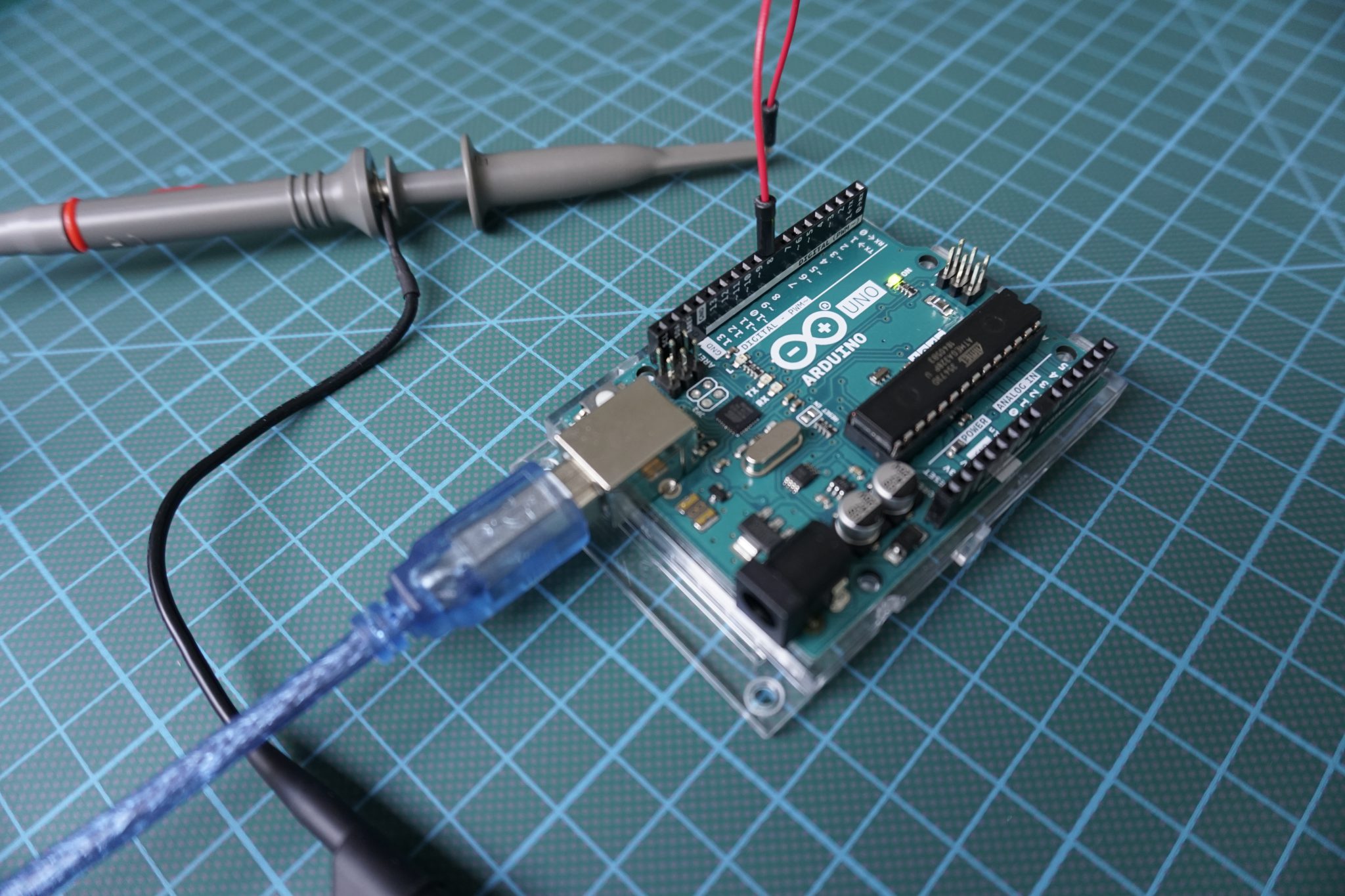
set compare match register for 1hz increments

TCNT1 = 0 //initialize counter value to 0 TCCR1A = 0 // set entire TCCR1A register to 0 Set CS01 and CS00 bits for 64 prescaler set compare match register for 2khz increments TCNT0 = 0 //initialize counter value to 0 TCCR0A = 0 // set entire TCCR0A register to 0 The main structure of the interrupt setup looks like this:

#Arduino timer1 code#
I pretty much just copy the same main chunk of code and change the Prescaler and compare match register to set the correct interrupt frequency. The code involved for setting up timer interrupts is a little daunting to look at, but it's actually not that hard. Timer setup code is done inside the setup() function in an Arduino sketch. Since 256 < 15,624 < 65,536, you must use timer1 for this interrupt. So if you wanted an interrupt every second (frequency of 1Hz):Ĭompare match register = -1 Remember that when you use timers 0 and 2 this number must be less than 256, and less than 65536 for timer1 Rearranging the equation above, you can solve for the compare match register value that will give your desired interrupt frequency:Ĭompare match register = - 1 The +1 is in there because the compare match register is zero indexed Interrupt frequency (Hz) = (Arduino clock speed 16,000,000Hz) / (prescaler * (compare match register + 1)) Now you can calculate the interrupt frequency with the following equation: (I'll explain the meaning of CS12, CS11, and CS10 in the next step.) As indicated in the tables above, the prescaler can equal 1, 8, 64, 256, and 1024. So a 1 prescaler will increment the counter at 16MHz, an 8 prescaler will increment it at 2MHz, a 64 prescaler = 250kHz, and so on. (timer speed (Hz)) = (Arduino clock speed (16MHz)) / prescaler A prescaler dictates the speed of your timer according the the following equation:

Instead you can control the speed of the timer counter incrementation by using something called a prescaler. Clearly, this is not very useful if you only want to interrupt once a second. This means at 16MHz, even if we set the compare match register to the max counter value, interrupts will occur every 256/16,000,000 seconds (~16us) for the 8 bit counters, and every 65,536/16,000,000 (~4 ms) seconds for the 16 bit counter. Once a counter reaches its maximum, it will tick back to zero (this is called overflow). Timer1 is a 16 bit timer, meaning it can store a maximum counter value of 65535. Timer0 and timer2 are 8 bit timers, meaning they can store a maximum counter value of 255.

There are three counter registers in Arduino Uno, namely, Timer0, Timer1, and Timer2. There is a 16Mhz clock that acts as a base clock in Arduino Uno, generally, 16Mhz is too fast for our application so we have to divide it by some number in order to make it useful for our day-to-day applications, that number which we use to divide is known as Prescaler, it helps us in bringing the high-frequency base clock down to match our application. There are a lot of use-cases where we need to count the time after an event happens or we want to turn the output of a particular pin high or low after some time, for this we need to use the timers. Modulation of the width of a pulse is all about controlling the Duty Cycle, that is, to control how much time the digital output remains high or low, precise control over the time is needed to make PWM work, and for this, we need to use the inbuilt timer that exists inside our Arduino. PWM or Pulse Width Modulation is a method well known and has a wide range of applications, from motor control to dim an LED. Timers play a vital role in controlling various aspects of the microcontroller, in our case, the Arduino, some of the applications are as follows: 1.) PWM
#Arduino timer1 how to#
Timers are a vital part of working with microcontrollers, continuing the "Improving Arduino Skills" series, I will show you how to work with them in order to unleash the power of timers and counters!


 0 kommentar(er)
0 kommentar(er)
